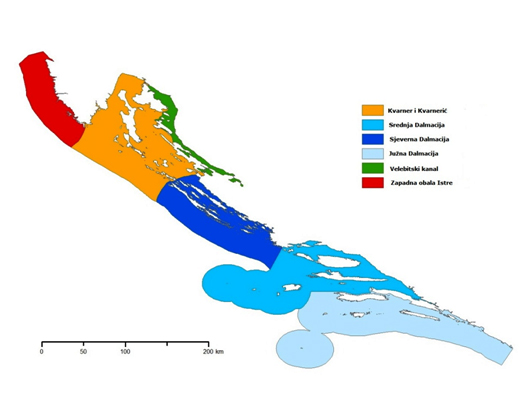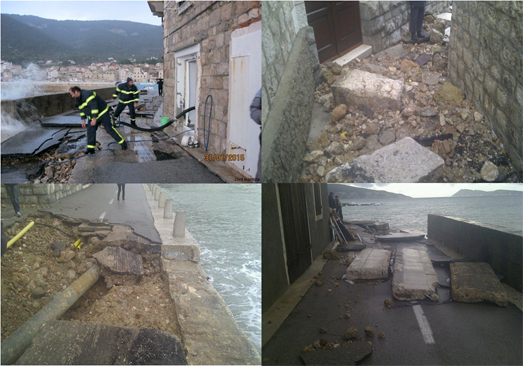News
The new DHMZ's warnings on Meteoalarm
DHMZ, June 3rd 2016. - Within the EUMETNET project Meteoalarm DHMZ as been providing for seven years the warnings on potentially hazardous weather conditions. From June 1st 2016, DHMZ is also providing the coastal warnings on maximum expected wind gusts for six climatological regions of the Croatian part of the Adriatic (Fig. 1).
As in already existing warnings for the continental regions, the regions in Croatian part of the Adriatic will be coloured light-blue (in textual part green) when no warnings are in force, and yellow, orange or red, depending on the wind hazard level.
The colour itself already gives the information and the first indication of wind force. So far, the aim has not been alarm the public with no reason, but to inform on possible hazardous weather conditions and to recommend how to adjust planned activities at sea according to expected weather conditions.
The yellow warning, which represents the lowest level of hazard, appears rather often. In fact, statistically speaking, a strong wind blows in the Adriatic almost every third day. Therefore, we could name it a warning for small boats and for inexperienced sailors, both expected in large numbers in summer tourist season.
The orange warning means that a dangerous wind is expected even for larger vessels and also points out a possibility of maritime traffic disturbance. Mainly gale force wind can impede catamarans and ferries, so the travellers are recommended to provide with the latest travel information.
The highest, red level warning means even a higher level of hazard and it connotes a high level of danger to health, and even life-threatening situations, particularly to sailors. Also, there is a significant risk of coastal infrastructure damage, as for example with extreme and luckily occasional, storm force Sirocco wind (Fig 2).
It is important to point out that warning levels of coastal and neighbouring continental regions do not have to overlap, as different criteria are taken into account, and consequences of hazardous phenomena differ on land and at sea (as it is observed in the example of other maritime countries which provide Meteoalarm warnings for coastal regions). In the Mediterranean, we are among the first, because similar coastal warnings are issued only in Spain.
By all means, it is necessary to emphasize that the Marine Meteorological Center (PMC), located in Split, and the Meteorological Office (PMU) in Rijeka, have a very long tradition of issuing marine weather forecasts. Since 1947, when PMC became a part of DHMZ, and as a part of other institutions even longer, the meteorologists in PMC have been issuing early and complete marine warnings according to the international SOLAS Convention (Safety of Life at Sea). The Meteoalarm system will now provide even general public and numerous tourists with everyday wind warnings. Nevertheless, we refer both skillful and less skillful sailors to keep up-to-date with marine weather forecasts which are issued several times a day and translated into English, German and Italian.

